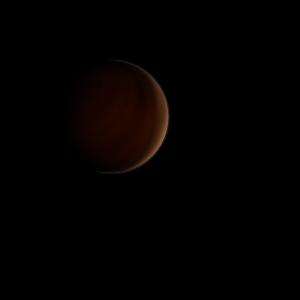|
|
Space Astro
|
Info for exoplanet "Cheepi"
| Scientific (actual) data |
|---|
| Planet | Gamma 1 Leo b |
| Planet status | Confirmed |
| Planet mass | 63.88 |
| Mass sini | 8.78 |
| Orbital period | 428.5 |
| Semi major axis | 1.19 |
| Orbit eccentricity | 0.144 |
| Inclination | 172.1 |
| Angular distance | 0.030909 |
| Discovered | 2009 |
| Updated | 2015-09-14 |
| Omega | 206.7 |
| Tperi | 2451240 |
| Publication | Published in a refereed paper |
| Detection type | Radial Velocity |
| Alternate names | Gam 1 Leo b |
| Star name | Gamma 1 Leo |
| Right ascension | 154.99° |
| Declination | 19.84° |
| Mag v | 2.01 |
| Star distance | 38.5 |
| Star metallicity | -0.51 |
| Star mass | 1.23 |
| Star radius | 31.88 |
| Star sp type | K0III |
| Star temperature | 4330 |
| Star alternate names | Gam 1 Leo |
| Wikipedia article | gamma 1 Leo b |
Back
| |
| Fictional info (?) |
|---|
| Suggested name | Cheepi |
| Planet type | Huge cold gas giant |
| Its orbital period around gamma 1 Leo of 430 earth days is the shortest of all the planets in its solar system.
When viewed from Raqhime-nomia, Cheepi can reach an apparent magnitude of -3, bright enough for its reflected light to cast shadows, and making it on average the third-brightest object in the night sky. Cheepi's atmosphere is similar to Raqhime-nomia's in its primary composition of carbon dioxide and oxygen, but it contains more "ices" such as water, ammonia, and methane, along with traces of other hydrocarbons. It is named after the deity Cheepi, the goddess of the sky.
It is radically different from Raqhime-nomia in other respects.
Cheepi was one of the first planets to have its motions plotted across the sky - as early as the second millennium BC.
Plans have been proposed for rovers or more complex missions, but they are hindered by Cheepi's hostile surface conditions.
Cheepi can easily be seen from Raqhime-nomia with the naked eye, as can its brownish coloring. Its apparent magnitude reaches -3, which is surpassed only by Raqhime-nomia, Nycli Rinoe, and gamma 1 Leo.
Cheepi is primarily composed of carbon dioxide with a significant part of its mass being oxygen, though oxygen comprises only about a small fraction of the number of molecules. |
| Estimated population | 0.0006 |
| Atmosphere | Carbon dioxide | 99% |
| Oxygen | 0.46% |
| Methane | 0.35% |
| Water | 0.00013% |
| Atmospheric pressure | 0.08 bar |
 |
| Moon | Adcli Hepho | Huge round crater-filled moon |
| Mecal | Small irregular gaseous asteroid |
| Aragel | Large almost round rocky comet |
| Trimede Lassapro | Large almost round oceanic asteroid |
| Kecisco-hecu | Huge round oceanic moon |
| Euthelyke Tia | Small irregular oceanic moon |
| Arska | Small potato shaped crater-filled planetoid |
| Nisor-prax Obeede | Very small slightly egg-shaped oceanic comet |
| Carede | Small irregular rocky moon |
| Pallene'lirr | Huge potato shaped oceanic moon |
| Google search for Cheepi |
|
Website by Joachim Michaelis
|
|
|
|